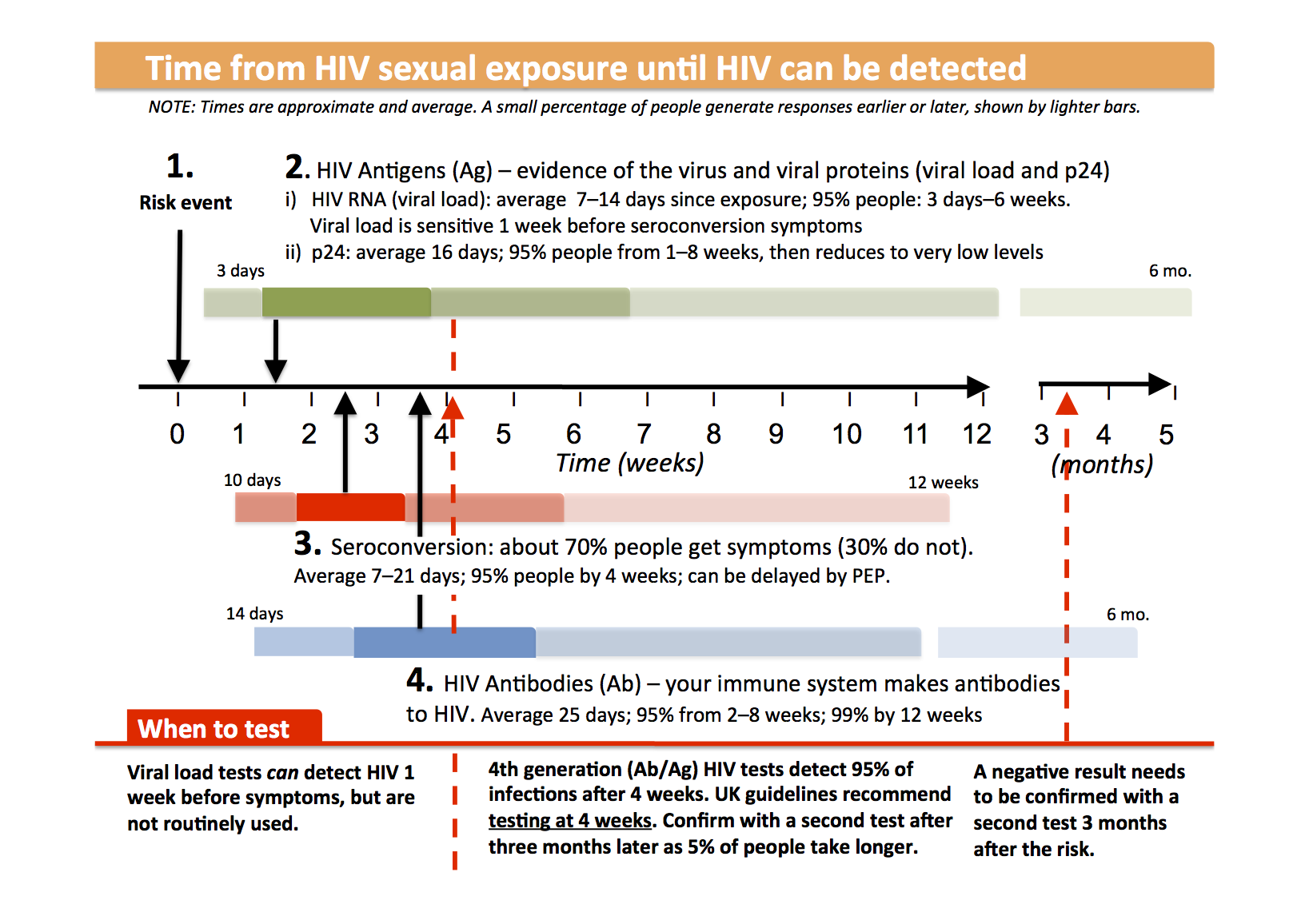Timeline for immune responses and testing
Figure 11 shows the range of times that people can take to respond to HIV infection.
The earliest marker is HIV viral load. This is in the first weeks after infection (usually from 1 to 6 weeks after exposure). A high viral load is related to seroconversion symptoms.
The first HIV protein (antigen) that can be measured is p24 (from 2 to 8 weeks after exposure).
Viral load and p24 tests are not accurate for diagnosing early HIV if the results are negative.
An HIV antibody response can be detected as early as two weeks in a few people and in more than 99.9% of people by 12 weeks. An antibody test at 4 weeks will detect 95% of infections.
Antibody testing at 4 weeks can give you a good indication of your HIV status, but you need a test at 12 weeks after the exposure to be considered HIV negative.
Figure 11: Timeline for HIV infection, immune responses and window period for different tests

Last updated: 1 June 2021.
